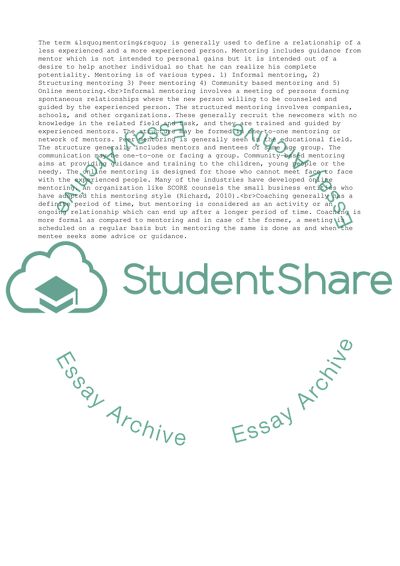Cite this document
(Coaching And Mentoring Programs For Improving Employee Performance Essay, n.d.)
Coaching And Mentoring Programs For Improving Employee Performance Essay. Retrieved from https://studentshare.org/management/1742022-coaching-and-mentoring-for-leadership-and-management
Coaching And Mentoring Programs For Improving Employee Performance Essay. Retrieved from https://studentshare.org/management/1742022-coaching-and-mentoring-for-leadership-and-management
(Coaching And Mentoring Programs For Improving Employee Performance Essay)
Coaching And Mentoring Programs For Improving Employee Performance Essay. https://studentshare.org/management/1742022-coaching-and-mentoring-for-leadership-and-management.
Coaching And Mentoring Programs For Improving Employee Performance Essay. https://studentshare.org/management/1742022-coaching-and-mentoring-for-leadership-and-management.
“Coaching And Mentoring Programs For Improving Employee Performance Essay”, n.d. https://studentshare.org/management/1742022-coaching-and-mentoring-for-leadership-and-management.


